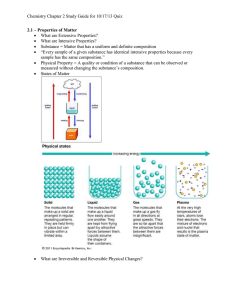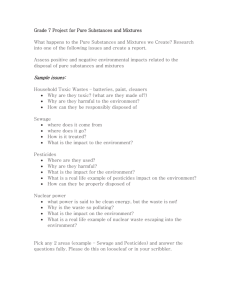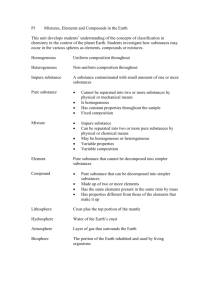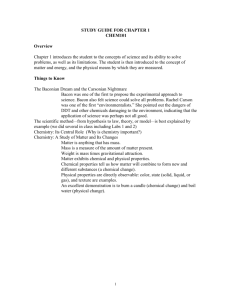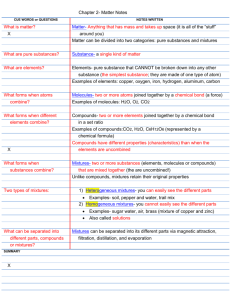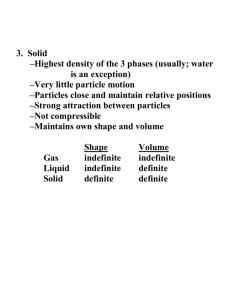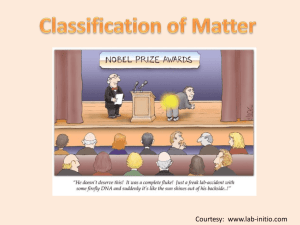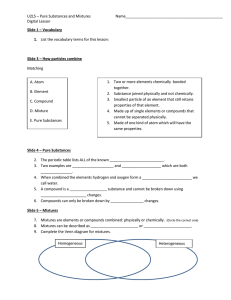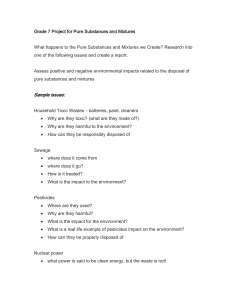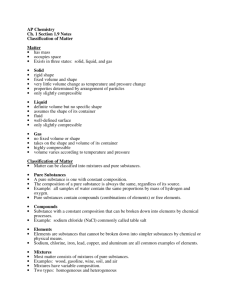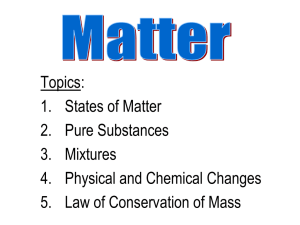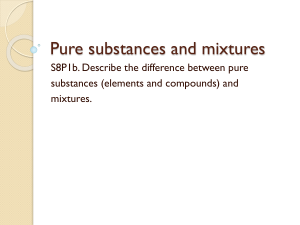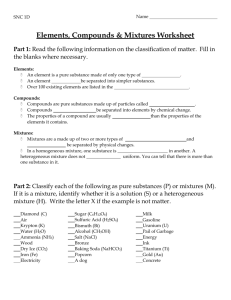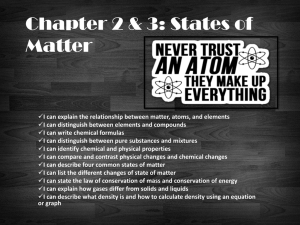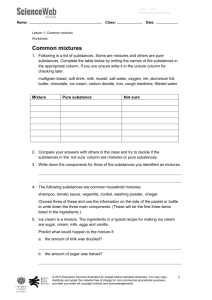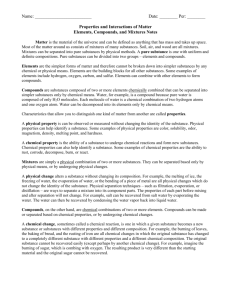Chapter 1 Matter and Measurement
advertisement
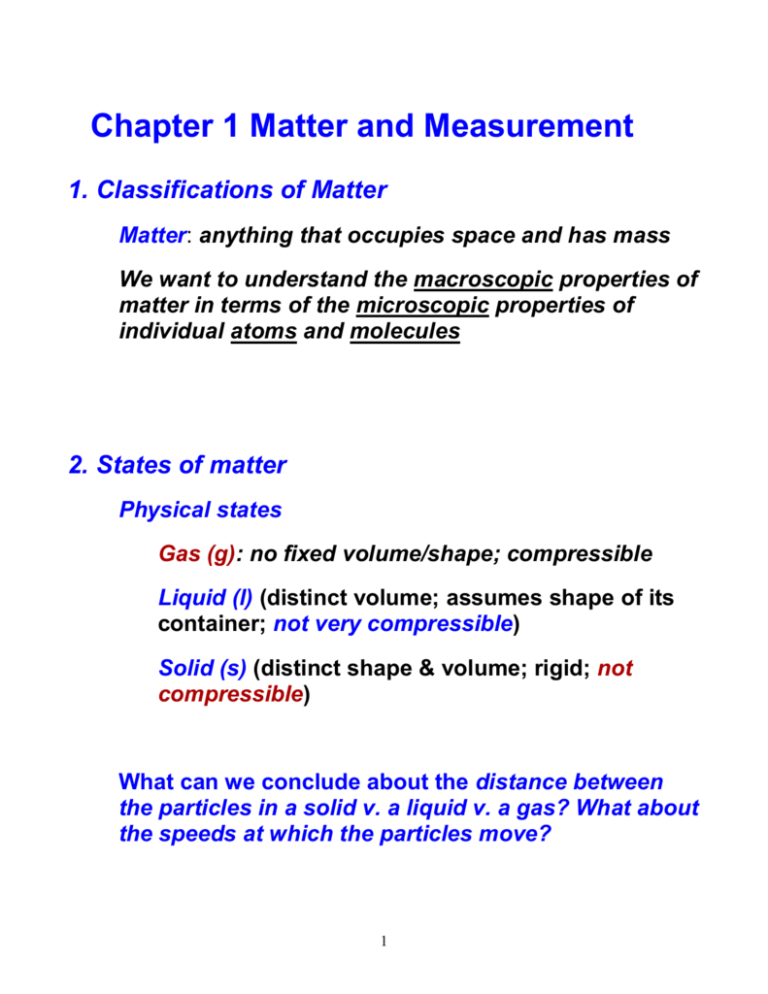
Chapter 1 Matter and Measurement 1. Classifications of Matter Matter: anything that occupies space and has mass We want to understand the macroscopic properties of matter in terms of the microscopic properties of individual atoms and molecules 2. States of matter Physical states Gas (g): no fixed volume/shape; compressible Liquid (l) (distinct volume; assumes shape of its container; not very compressible) Solid (s) (distinct shape & volume; rigid; not compressible) What can we conclude about the distance between the particles in a solid v. a liquid v. a gas? What about the speeds at which the particles move? 1 What determines whether matter will exist as a solid, a liquid, or a gas? Substances A pure substance (or just a substance): matter that has a fixed composition and distinct properties Most forms of matter are mixtures of pure substances Substances may be classified as either elements or compounds Elements Cannot be decomposed into simpler substances by chemical means 118 elements are currently known Start learning the names and symbols of elements 154 (hydrogen – xenon)! 2 Compounds Substances composed of two or more elements united chemically in definite proportions by mass e.g., H2O: a pure substance - has a constant , invariable composition (11% H, 89% O by mass), regardless of its source Law of Constant Composition (1800): Elemental composition of a pure compound is always the same examples? 3. Properties of Matter Two categories: chemical & physical Two types: intensive and extensive 3 Physical properties can be measured without changing the basic identity of the substance e.g., color, density, melting and boiling points Does measuring the boiling point of H2O change the identity of this substance? A physical change is a change in physical appearance but not in the basic identity of the substance All changes of state (sl, l g, etc) are physical changes 4 Chemical properties Describe the way a substance may change or react to form other substances examples? Chemical changes (or reactions) Transform a substance into a chemically different substance, e.g., C(g) + 2H2 (g) CH4(g) Is methane gas (CH4(g)) a chemically different substance than C(g) and H2(g) ? Intensive properties of matter Do not depend on amount of material examples? 5 Extensive properties Do depend on amount of material examples? Mixtures Combination of two or more substances, each of which retains its own chemical identity Two types of mixtures: heterogeneous and homogeneous Heterogeneous mixtures don't have the same composition and properties throughout examples? 6 Homogeneous mixtures Composition is uniform throughout Also called solutions examples? Remember: in a mixture, each substance retains its own chemical identity (i.e., physical and chemical properties) Can we exploit this fact to gain information about and separate the components of a mixture? examples? 7 Problem du Jour A solid white substance A is heated strongly in the absence of air. It decomposes to form a new white substance B and a gas C. The gas C has exactly the same properties as the product obtained when carbon is burned in an excess of oxygen. What can we say about whether the solids A and B and the gas C are elements or compounds? 8

